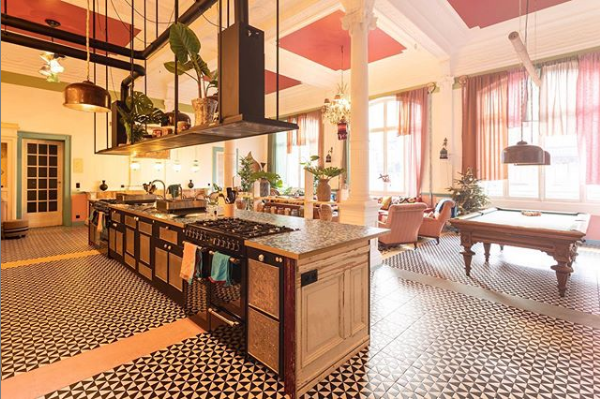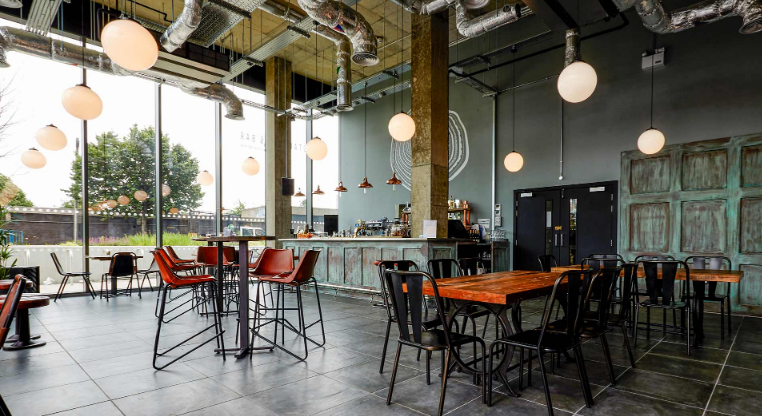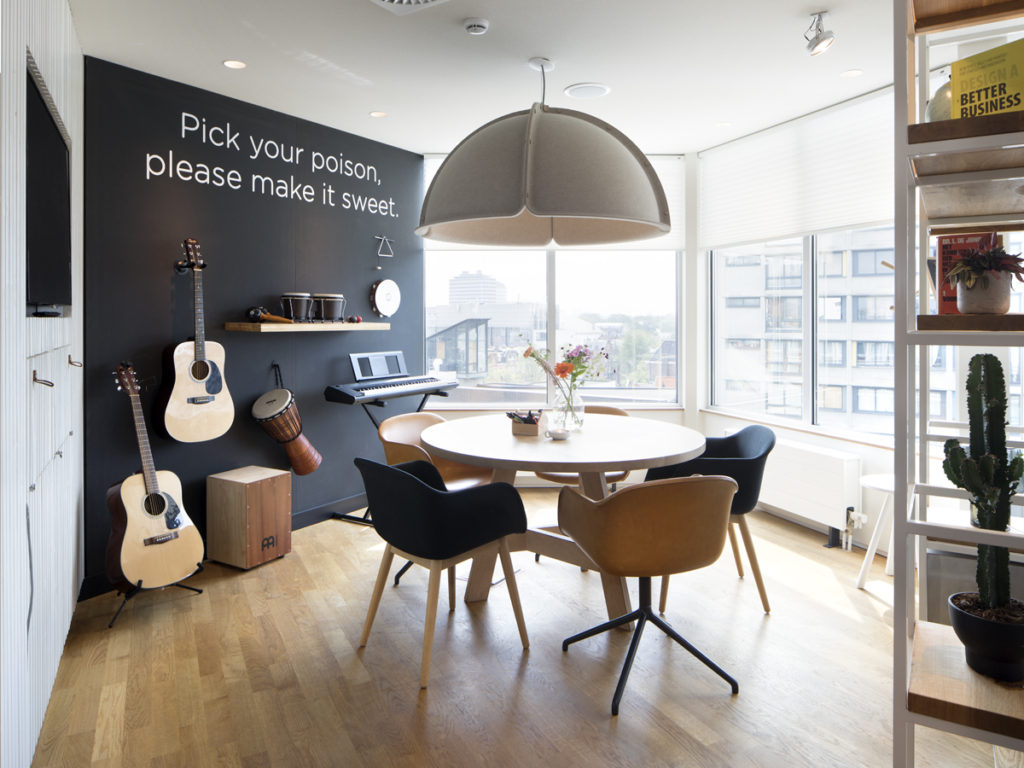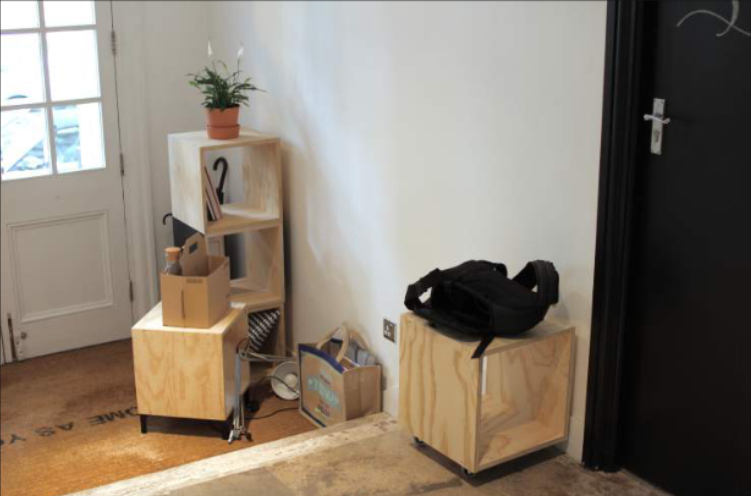In this article we share about coliving design and architecture for social interaction and community. How the built environment shapes our behaviours is a fascinating topic, and studies about this have produced both practically useful suggestions, as well as insights into how us human beings work (juicy!).
Also, tune in to Coliving Conversations (Season 1) 🎙️ 🏠 💚 to explore more on how to enhance social interaction and value.
Based on Jo William’s insightful research on Californian cohousing communities [1], we’re going to outline three simple concepts which will help to encourage social interaction within your coliving space, giving some examples of how these concepts might be put into practice.
Note: We have prepared a blog post on coliving design and coliving architecture, focused on how can coliving communities be designed in the times of Covid-19.
1. Shared pathways
This one is pretty simple: you are more likely to bump into people when there’s less pathways to choose from.
Small, regular moments of proximity can be key in initiating or maintaining relationships. Here’s a couple of examples of how this could work…
Have one path from the car park/bike shed to the house. When people come home from work this means that there’s a greater chance of them bumping into each other.

Another example: Make the route to the second floor go through a living space. On their way up the stairs residents might see a few people they know watching TV or playing a board game, and decide to join in the fun! Or they might stop for a minute and say hello.
2. Allow for some friendly surveillance
It’s much easier for people to engage in a bit of socialising if they know where the action’s happening.
Caveat – you should always balance this with giving people a sense of security and privacy in spaces too.
Here you have a few aspects your might consider…

- Having open plan spaces, such as kitchen/living areas
- Keeping doors propped open (if the fire regs allow it)
- Balconies or windows which overlook outdoor socialising space – make sure that everyone has a chance to see when there’s a BBQ going.
- Interior windows/glass walls or wide doorways to create a sense of both privacy and visibility
- Stairs/landings overlooking communal space
3. Create spaces for interaction
Create the possibility for moments to happen.
This could mean orchestrating something for people to talk about, or giving people the means to linger in the same place together.
The best thing about this one is that you don’t necessarily need to build this into your architectural design.
With just a few changes to your interior design you can enhance the friendliness factor!
Here are some ideas:

- How about putting a sofa and a newspaper stand in a common area. People can sit, read the paper, and who knows, maybe even start a conversation… or if not a newspaper stand, how about some adult colouring books with colouring pencils? Or a collaborative notebook, where residents are encouraged to write or draw something? Or some Conscious Coliving leaflets? 😉
- Put comfortable tables and chairs in all the right places, such as in the laundrette, in nooks on the landing, on the patio, and anywhere that might be a pleasant spot to linger.
- Encourage communal activities: have multiplayer board games, or video games, decks of cards, musical instruments, snacks and beverages.
Note – when creating these spaces it’s important to think about giving people a sense of security. E.g. single chair in a long/straight corridor isn’t very inviting compared to an armchair in a cosy nook of the entrance hall.
4. Bonus tip 😉 - flexible furniture and modular design
Research by Green (2017) [2] showed increased user engagement in coliving spaces when multi-use modular furniture was introduced, with residents being encouraged to move and use the furniture as they wished.
Through observing how the modular furniture was used, Green found that coliving operators were better able to understand how their residents used the space.
By handing over some control to the residents, the project furthermore built resident trust, confidence and wellbeing.

By allowing your residents to have a say in shaping their spaces, you will enable them to feel connected with that space, which, through the proximity encouraged, will enable them to better connect with each other.
So there are a few simple ideas to get you thinking about how you might help create those all-important small social interactions. These are the moments which go a long way in building a shared sense of community and a shared sense of home, which in turn, research has shown. have important positive impacts upon health, wellbeing and community resilience [2].
Of course, what you can and should do depends on the building that you’re working with, and on what it is that your residents want and need.
Do you have any of your own examples to share?
Would you like support with designing for social interaction? We are coliving consultants and we would be happy to explore how can we collaborate. Fell free to get in touch.
Sources
- [1] Williams, J. (2005) ‘Designing neighbourhoods for social interaction: The case of cohousing’, Journal of Urban Design, 10(2), pp. 195–227. Available at: http://www.tandfonline.com/doi/pdf/10.1080/13574800500086998?needAccess=true.
- [2] Green, G. (2017) ‘The Logistics of Harmonious Co-living: Exploring contemporary co-living through design interventions’. Linnaeus University, Faculty of Arts and Humanities, Department of Design, Masters Thesis.
- [3] Project for Public Spaces (2012), ‘How ‘Small Change’ Leads to Big Change: Social Capital and Healthy Places’. Available at: https://www.pps.org/article/how-small-change-leads-to-big-change-social-capital-and-healthy-places (Accessed: 21 March 2019).
- UK Green Building Council (2016) ‘Health and Wellbeing in Homes’. Available at: https://www.ukgbc.org/wp-content/uploads/2017/12/Healthy-Homes-Full-Report.pdf (Accessed: 21 March 2019)
This article has been coauthored for you by:
Tom Manwell is a fully qualified U.K. architect. Before founding his two current companies, Tom gained experience with a range of award winning practices working on small, medium and large scale residential schemes in London, the U.K. and Europe.
Transformational Coach and facilitator. Trainer in mindfulness, sharing circles, and how to live and lead more consciously. Co-author of the Community Facilitation Handbook and the Coliving Apps & Tech Guide. Facilitates community engagement strategies.
